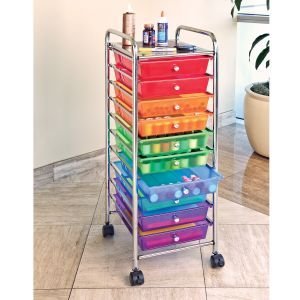I frequently run across discussions
on homeschool blogs, groups, and message boards on the topic of a child's
success--more specifically, what direction they should be steered toward to
ensure they will be successful adults. College or not? At age 18 or 21?
I have a
number of problems with this.
My issue
isn't that the debate can get rather lively on the subject, but rather the idea
that there is supposed to be a single, unified answer to the question in the
first place.
Problem 1: What is "Success"?
How is success defined? The trouble
with the word success is that the answer varies based on who you ask. A
cross-section of homeschoolers asked this question might offer answers like
these:
*Having a status career, such as
doctor, lawyer, celebrity, or professional athlete
*Having lots of money and status
"toys"
*Getting paid to do something they
love
*A life involved in helping others
and the planet
*A good marriage and raising a happy
family
 *The ability to find inner
peace and serenity whatever the circumstances
*The ability to find inner
peace and serenity whatever the circumstances
*Attaining popularity with many
friends
*Following spiritual beliefs to the
best of ability
So right there we have eight
possible viewpoints on what constitutes success. Which one most closely
meets your personal definition?
Problem 2: Different Goals Need
Different Approaches
If one person's definition varies
from the next, it stands to reason that there is no one answer as to how to
achieve the end goal. In the above list, it's easy to see one path won't
necessarily work for all goals. College, for instance, may be the only route to
becoming a doctor, but it isn't necessary or even relevant to other goals such
as a wonderful home life, spiritual path, or launching certain careers.
Problem 3: We are Not Our Children
Our definition of success may not be
the same as our child's, and we need to be okay with that. Of course we have
certain hopes and dreams for our offspring, but pushing them onto a path to
meet our expectations doesn't allow a child to grow into their own unique
success. Respect a child as an individual and be willing to guide them onto
whatever path best supports their current life goals...which brings me
to one more problem.
Problem 4: Times--and People--Change
I've asked myself the "What is
success?" question off and on over the years, and the answers have changed
even as I have developed as an individual. Ask a 3-year-old what they want to
be when they grow up and you'll likely get a very different answer when they
are 8, 12, and 18. So should you plan ahead for college when they're 4?
Absolutely. But should you insist that they go when the time comes if they have
other ideas? I say not.
It can be hard to let go and trust a
child with things like the future. We'd rather they learned from our own
experience and mistakes instead of their own. But honestly, how open is a child
to learning when it is required rather than desired?
My own college education began after
I was 35. I went back to school to pursue a career path I ultimately decided
against, but nevertheless I spent two years in classes. It was hard, going to
school full time when I already had the adult responsibilities of a job and
family, and some might wonder whether I'd have been better off having had
college right out of high school. But because it was my personal choice to
attend, I appreciated the experience more. I thrived in the setting, excelled
in my classes, and absorbed knowledge that enriched my world view and my
understanding of who I am. Had I been pushed into college in my teens, it would
have been a whole different story. I was in a wholly different place back then
and much would have been lost on me. I wound up going at the right time for me
rather than the right time as determined by common practice.
Does this mean I think kids
should avoid college or wait until their thirties? No way. But we don't all
dance to the same drummer, so why should all kids be forced to start college at
the same time-or at all, for some? We homeschool our children because we
recognize the benefit of a different approach from the mainstream. That
philosophy doesn't need to stop when they come of age.
Times have changed as well. College
is no longer the place where you stick a brand new adult in a learning mill and
have them emerge with a guaranteed career. Many, many college grads cannot get
jobs regardless of their education. In addition, many grown kids are
falling back into the nest or are launching later in the first place. So what's
the big hurry to shove a child out the door the minute they turn eighteen? If
they want a year off to travel
after high school or opt for a career that doesn't require university, why
shouldn't they be supported to do so? They will continue to learn about the
world because they'll still be in it.
My six grown children range in
education from high school to vocational training and military education to
Master's degree work, yet they all have one thing in common. I consider every
single one of them a total and unmitigated success. All of them have
learned how to think, how to learn, and how to adapt to the changing face of
their futures. They set goals and find ways to achieve them based on what best
fits their circumstances. And in the end, isn't that the best training we can give a
child--the mental tools to pursue their unique definition of success?









